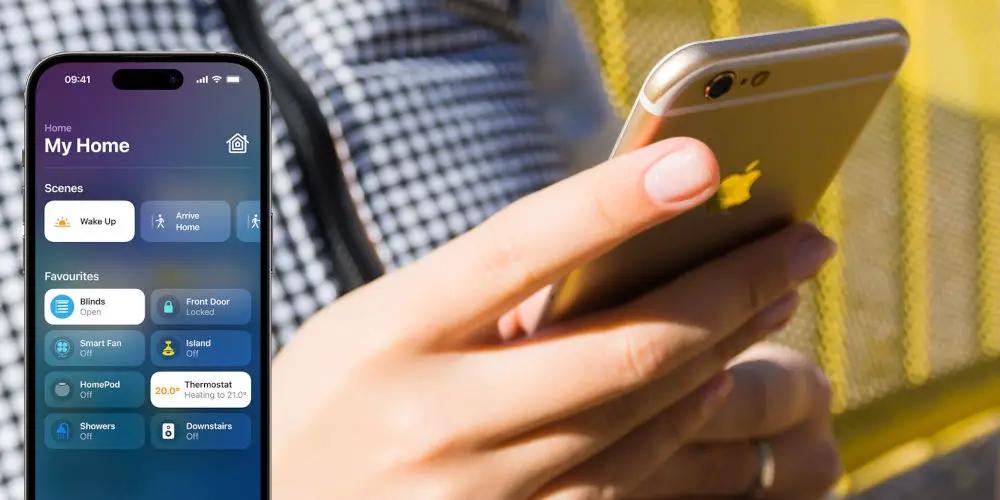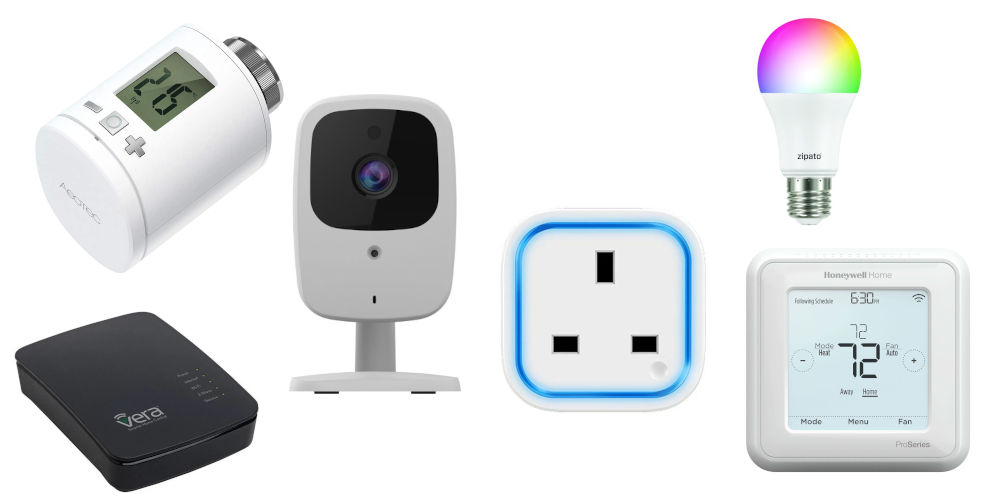Does Apple HomeKit work with Z-Wave?

Building a smarter home involves understanding different protocols and figuring out how to get them working together. Two of the leading DIY systems are Z-Wave and Apple HomeKit. So you might wonder, does Apple HomeKit work with Z-Wave?
While both systems achieve similar outcomes of making your life easier by automating core tasks, how they work under the hood is dramatically different. You can read our comparison to find out how they compare.
You might find a Z-Wave device that isn’t yet available in a HomeKit version, and yet you need that device to fully automate your home. To complete your system, you need to find a way to marry up Z-Wave and Apple HomeKit without losing the will to live!
Imagine having your coffee machine turn on in the morning without you pushing a button, or how about unlocking your door from the beach to let the cleaner in? Both are possible and many homeowners dream of doing such things.
Let’s explore does Apple HomeKit work with Z-Wave and how to get these two different systems working in harmony.
Does Apple HomeKit work with Z-Wave?
Unfortunately, Apple HomeKit does not directly support Z-Wave devices. However, there are some options that allow you to integrate Z-Wave devices into a HomeKit system.
So, while it’s not as straightforward as connecting natively HomeKit-supported devices and platforms, with a bit of effort we can get the two different systems working together in harmony.
Over 5,000 devices use Z-Wave compared to the few hundred that use the HomeKit protocol. But you might prefer how the Apple user interface works over say Fibaro, which is a Z-Wave based system.
You can still use Apple HomeKit with Z-wave and control both systems using Siri, Apple’s virtual assistant. Allowing you to say: “Hey Siri, turn off the living room lights” and within seconds, the light turns off.

selection of Z-Wave devices
How can we integrate Z-Wave devices with HomeKit?
If you’ve tried to integrate different protocols together, you’ll know that it often isn’t simple or easy. Usually, it’s a complete nightmare and can feel like herding cats!
Thankfully, we have two solutions that will allow you to seamlessly integrate the two systems together. We could use a hub or a plug-in. Of course, if you’re using HomeKit devices, it should be easy to find comparable Z-Wave ones that enable you to create your dream smart home system.
Use a hub or bridge
You could use a hub or bridge that supports both Z-Wave and HomeKit or the new Matter protocol. If you’re unaware, Matter aims to make it seamless to integrate multiple different systems with ease and is supported by Samsung SmartThings.
There are several smart home hubs such as Hubitat and HomeAssistant that connect to Z-Wave devices and allow them to talk with HomeKit through the hub’s integration. So, you can control Z-Wave devices via HomeKit even though HomeKit doesn’t connect to Z-Wave directly.
Use a plug-in or app
Some third party plug-ins and apps can add HomeKit support to Z-Wave devices. For example, the Homebridge plug-in for HomeAssistant allows you to connect Z-Wave devices to HomeKit.
You might even find that your Z-Wave devices also have their own apps that can integrate the device with HomeKit, making the process even simpler.
What are the advantages of using either solution?
Controlling your smart home from a single app is the goal, as no one wants to juggle multiple apps. Thankfully, by integrating your Z-Wave devices with Apple Homekit, you can control everything using voice commands via Siri.
Rather than needing to find the correct app to adjust your lights, turn the heating up, or lock the door, you can simply say “Hey Siri” and let the virtual assistant do the heavy lifting.
There’s even better news, if you have an Apple TV, you can now use it to control your Z-Wave system. You can enjoy the flexibility of your Z-Wave devices with the sleek control of Apple, creating the best of both systems.

selection of Apple HomeKit devices
Are there any drawbacks?
While it might seem ideal to integrate your Z-wave devices with Apple HomeKit, it’s worth being aware of the drawbacks.
Firstly, you’ll need to buy a second hub, which is an additional expense you might not have envisaged. You can buy a £50 hub that could solve the majority of your connectivity issues. However, you might need to spend £300 to fully integrate the two systems together.
Some of your devices might not work within the system. A common issue with some devices is that they say on the box they are compatible with a particular protocol. However, when you get them home, they aren’t or at worst did work in the past, but the manufacturer no longer supports them.
You might find that you can integrate Apple HomeKit and Z-Wave devices, but you don’t have access to all of the parameters you need to customise the settings to your requirements. The worst outcome would be a device that only partially works and doesn’t perform as you expected it.
The more complex your system is, the more likely it can develop issues. Also, it makes troubleshooting harder when issues arise. And this is without mentioning needing to keep everything up to date, which can be stressful.
With a hub or bridge involved, commands from HomeKit to Z-Wave devices may be slightly delayed as they pass through the additional hop. Also, Z-Wave devices can’t take advantage of HomeKit’s low-latency, secure Thread mesh protocol as it’s specific to Apple’s system.
So, does Apple HomeKit work with Z-Wave?
If you’re wondering does Apple HomeKit work with Z-Wave? You’ll know that you can integrate the two systems together. You’ll need an additional hub or some software, but it’s a relatively simple solution to get these disparate systems working in harmony.
You’ll also need to some time configuring your Apple Homekit app and solving any issues that crop up. And with any DIY smart home system, there will be issues to sort and tests to run. But that shouldn’t surprise you!
But overall, you can get Apple HomeKit and Z-Wave working together.




